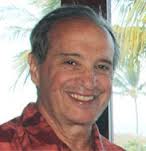Leah McEwen
 Leah McEwen is the Programmatic Coordinator for the Edna McConnell Clark Physical Sciences eLibrary and the Chemistry Librarian at Cornell University. Her background is in biochemistry and library science and she is responsible for library resources and specialized services supporting chemistry in all fields and science and technology studies at Cornell. She has contributed to and served in advisory capacity for a number of information resources including the ACS Style Guide, the ACS CPT Guidelines for Bachelor’s Degree Programs, Cornell’s VIVO, and CAS’ SciFinder. She is an active member of the Chemical Information Division of the American Chemical Society, most recently as Secretary as well as Program Chair, addressing a wide range of topical interests from open access to advanced training and education to intellectual property and licensing to data- and text-mining. She is also a member of the ACS Joint Board-Council Committee on Publications, the adjoining Subcommittee on Copyright and the Chemical & Engineering News Editorial Board.
Leah McEwen is the Programmatic Coordinator for the Edna McConnell Clark Physical Sciences eLibrary and the Chemistry Librarian at Cornell University. Her background is in biochemistry and library science and she is responsible for library resources and specialized services supporting chemistry in all fields and science and technology studies at Cornell. She has contributed to and served in advisory capacity for a number of information resources including the ACS Style Guide, the ACS CPT Guidelines for Bachelor’s Degree Programs, Cornell’s VIVO, and CAS’ SciFinder. She is an active member of the Chemical Information Division of the American Chemical Society, most recently as Secretary as well as Program Chair, addressing a wide range of topical interests from open access to advanced training and education to intellectual property and licensing to data- and text-mining. She is also a member of the ACS Joint Board-Council Committee on Publications, the adjoining Subcommittee on Copyright and the Chemical & Engineering News Editorial Board.

 I have been involved in chemical databases and chemical information since the early 1970's. From the NIH/EPA/NIST mass spectral database to the NIH/EPA Chemical Information System (CIS) to the Open Source IUPAC International Chemical Identifier (InChI) I have seen the explosion of electronic information. This vast explosion of electronic information, coupled with the Internet has created the opportunity to connect these many, many silos and islands of data and information. Since what we are looking to access, analyze and understand is associated with a chemical, the ability of the InChI chemical identifier linking these sources is critical to progress. I am currently the Project Director of the
I have been involved in chemical databases and chemical information since the early 1970's. From the NIH/EPA/NIST mass spectral database to the NIH/EPA Chemical Information System (CIS) to the Open Source IUPAC International Chemical Identifier (InChI) I have seen the explosion of electronic information. This vast explosion of electronic information, coupled with the Internet has created the opportunity to connect these many, many silos and islands of data and information. Since what we are looking to access, analyze and understand is associated with a chemical, the ability of the InChI chemical identifier linking these sources is critical to progress. I am currently the Project Director of the 